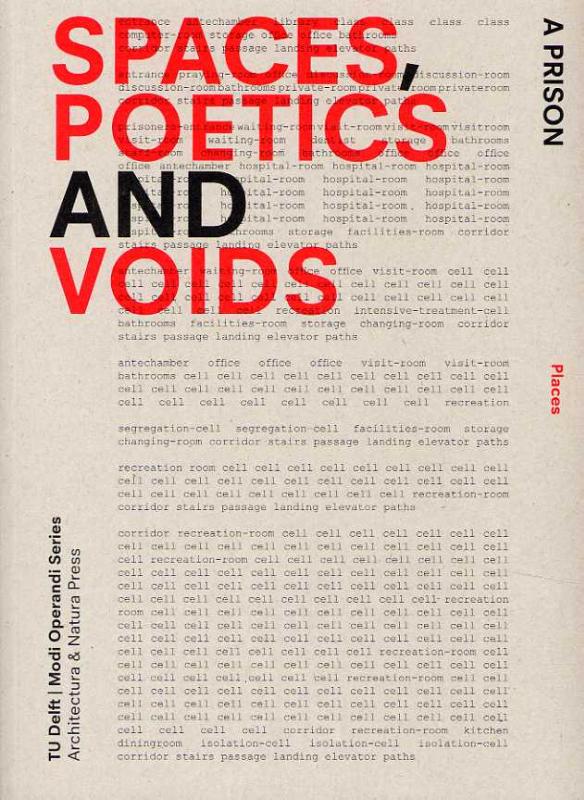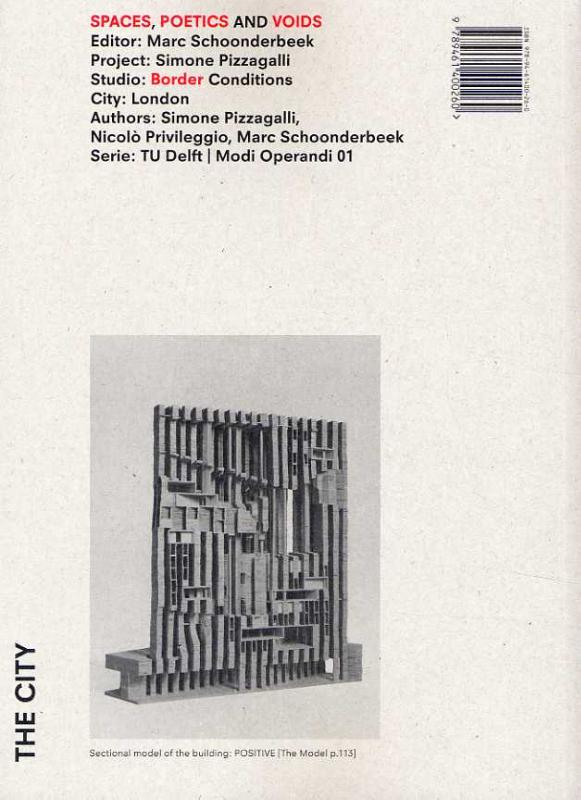- Engels
- Pockets
- kunst algemeen
- bouwkunst, archit.
- SPACES, POETICS AND VOIDS
PIZZAGALLI, SIMONE
SPACES, POETICS AND VOIDS
24,50incl BTW
Vertrouwd sinds 1927
Persoonlijke aandacht en advies
Vanaf 17,50 gratis verzenden NL & BE
Meer dan 150.000 artikelen online
Omschrijving SPACES, POETICS AND VOIDS
The East Railway Line in London is a fascinating subject of study. It is rich in history and forms a surreal and fragmented physical presence between the City and the East End. A literary analysis of the chaotically ordered composition of this part o
f the metropolis involves spaces, places, voids and objects within the realm of this place of experience and imagination, with its visible elements and its ethereal body of histories and myths. The process of naming spaces and elements becomes a new
way of making them exist in reality, a way of translating the complex and chaotic body of the city into some rough material capable of being rearranged and sequenced in a story or on a map: words, pauses, punctuation, rhythms. As in a text, what is n
ot written remains the place of the active reading imagination, and similarly this applies to empty city areas, voids, unnamable places where a consistently different interpretation of the metropolis is created by the active (living) reader. From an
empty plot of the city, the place of emptiness, the idea of reclusion and forced detachment from the world started to arise: a prison. It is a regular, obsessive, enclosed structure that is simultaneously open, light and transparent, with an ordered
composition of elements and functions that range from diversity to repetition and rigidity. A set of different functional elements and spaces are intertwined into a repetitive structure rigid enough to be an ambiguous in-between, an inside without an
outside, simultaneously present and indefinitely far away. A prison is a silent and critical element in the city, a meaningful pause in a chaotic realm of confusion. The prison is a formal interpretation of the language of the metropolis, a place wh
ere lives and stories unfold and are reconstructed into something new and different.
f the metropolis involves spaces, places, voids and objects within the realm of this place of experience and imagination, with its visible elements and its ethereal body of histories and myths. The process of naming spaces and elements becomes a new
way of making them exist in reality, a way of translating the complex and chaotic body of the city into some rough material capable of being rearranged and sequenced in a story or on a map: words, pauses, punctuation, rhythms. As in a text, what is n
ot written remains the place of the active reading imagination, and similarly this applies to empty city areas, voids, unnamable places where a consistently different interpretation of the metropolis is created by the active (living) reader. From an
empty plot of the city, the place of emptiness, the idea of reclusion and forced detachment from the world started to arise: a prison. It is a regular, obsessive, enclosed structure that is simultaneously open, light and transparent, with an ordered
composition of elements and functions that range from diversity to repetition and rigidity. A set of different functional elements and spaces are intertwined into a repetitive structure rigid enough to be an ambiguous in-between, an inside without an
outside, simultaneously present and indefinitely far away. A prison is a silent and critical element in the city, a meaningful pause in a chaotic realm of confusion. The prison is a formal interpretation of the language of the metropolis, a place wh
ere lives and stories unfold and are reconstructed into something new and different.
Specificaties
- MerkUITGEVERIJ ARCHITECTURA &
- GroepKUNST ALGEMEEN (640)
- Barcode9789461400260
- LeverstatusActief
Reviews
0.0/5.0
Gemiddelde uit 0 reviews
Meest behulpzame reviews
Nog geen reviews geschreven




